-
-
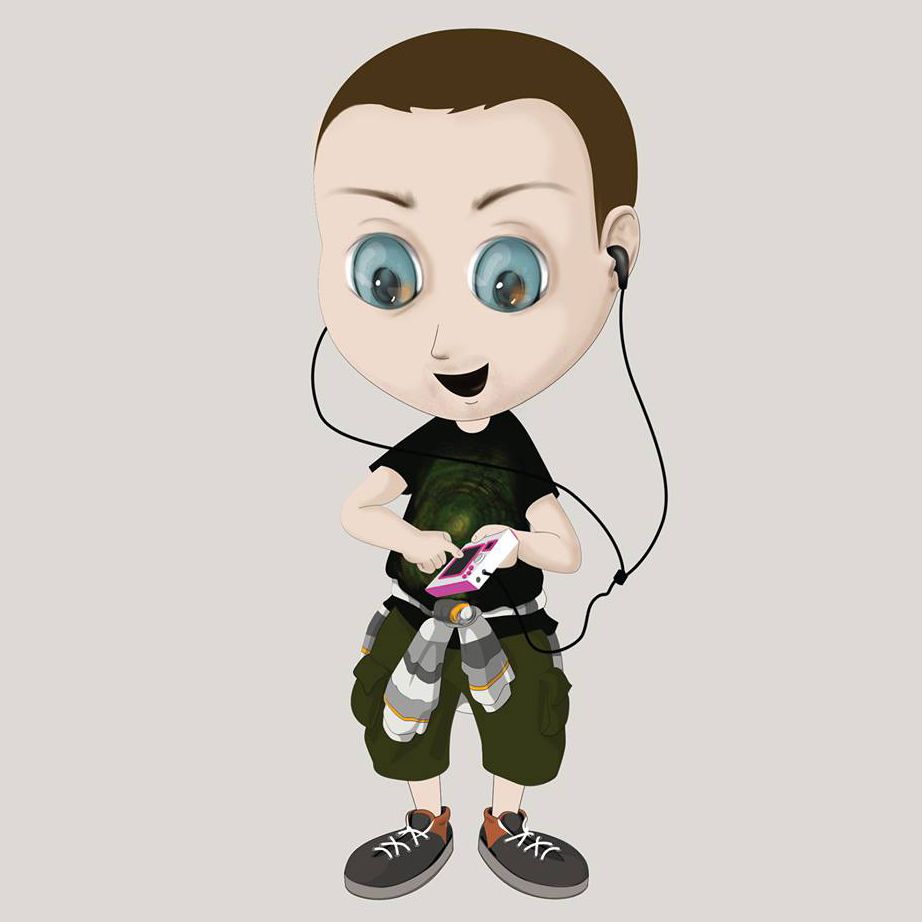
-
Sam Ives
- 9 December, 2013 in People & Adventures
Building a Controllerist Studio part 2: The Wall and Acoustic Treatment
In part 1 I shared with you my adventures of designing and building my own custom hybrid controllerist/production desk.
Since then I’ve been busy planning and building a wall to close off a section of the basement to make my own studio space. I have also applied the acoustic foam panels and bass traps that I purchased as well as built my own diffusers for the back wall.There wasn’t a great deal of planning involved in building the wall and it was a fairly straight forward build compared to the desk.
First I took some measurements and then purchased the materials. I got started building the frame and had it in position within a couple of hours: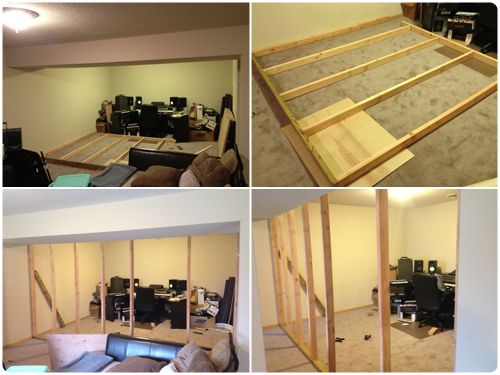
The frame was ready for the sheetrock (or plaster board if you’re from the UK) :
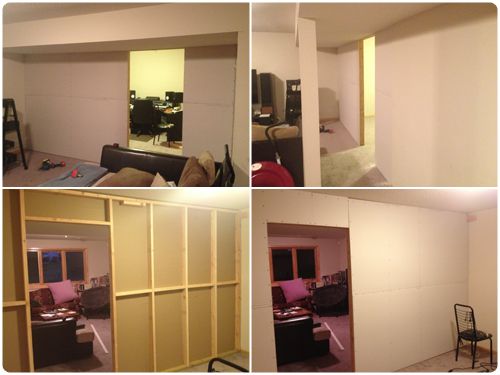
The door was fitted, then it was time for the compound, a coat of paint and the trim:
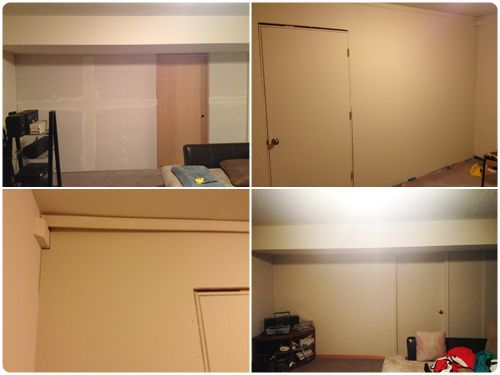
With the wall built I was able to put the desk in place and then it was time to fix the bass traps to the corners of the room and the acoustic foam panels to the walls. These were cut into 11″x11″ squares from 2′x4′ rectangle panels using a bread knife (which, believe it or not, is the best way to cut them)! :
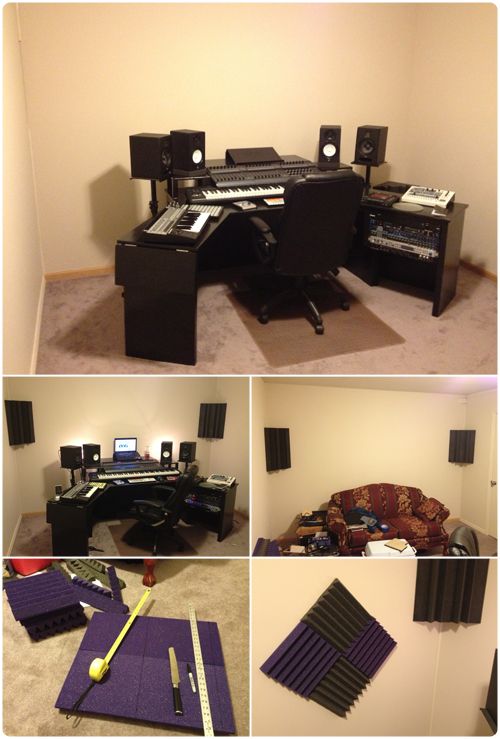
More acoustic foam placed at the reflection points to the left, right and rear walls.
The couch acts as a bass trap with old bedding placed underneath: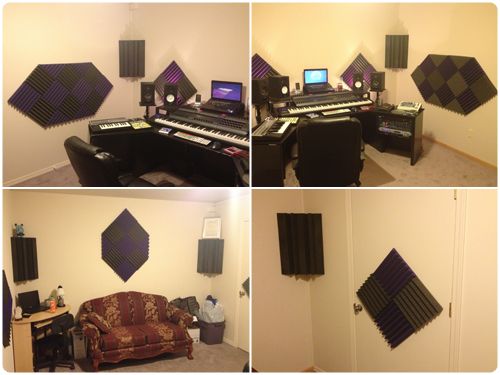
Now all I needed was a couple of diffusers on the rear wall either side of the foam panel. My initial thought was to fit two bookshelves on the wall and place ornaments on them, the idea being that the sound that travels back is not reflected directly back to my ears but is scattered when it hits the ornaments.
After deciding what size I would like these shelves to be, I bought the materials and began building them: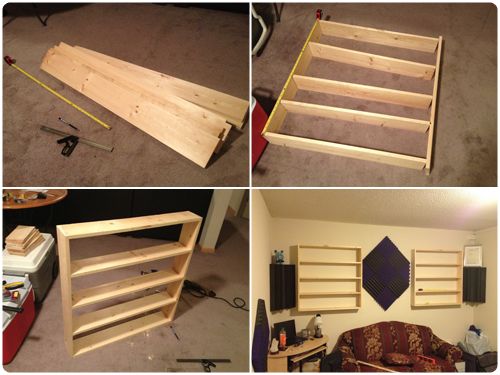
One coat of primer and two coats of black gloss later, they were ready for the ornaments:
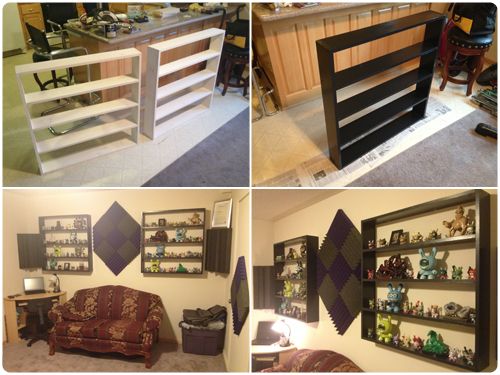
With the shelves/diffusers in place the studio is almost complete.
The following photos really don’t do the studio justice. I much prefer the ambient lighting provided by three lamps:
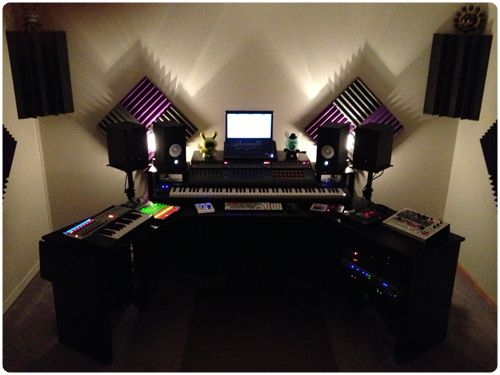
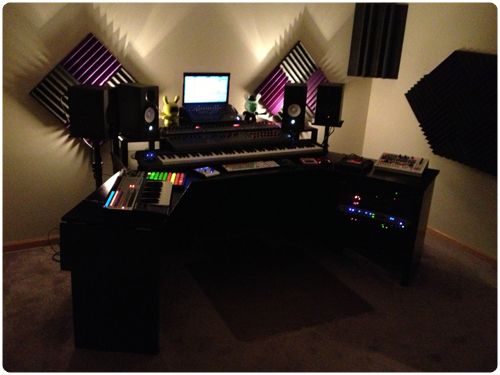
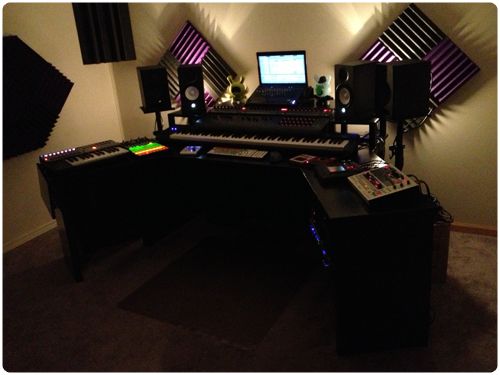
My controllerist studio is now for the better part complete albeit a 27″ computer screen (which I am getting for Christmas), more ornaments and a few posters etc.
Now that I’ve finished setting everything up, it’s time for me to learn the monitors and the room. I have already noticed faults in my old productions, particularly in the low end frequencies. This means that my future productions should sound a lot less muddy and maybe now I’ll have the confidence to take my hobby to a professional level.
Aside from my productions I am working on, I do plan on making many more live sessions. -
-
-
-
Mission Accomplished, Thanks and...
A Brief History of Controllerism.com
November 24th, 2015
by Moldover
I initially...
-
The Oval, The World’s First...
Support The Oval Kickstarter project here If you’re anything like me, then you were probably mesmerized...
-
The ACPAD, Wireless Control Surface for...
Berlin-based artist Robin Sukruso and ITT Bombay have developed a wireless control surface for acoustic...
-
Video Interview: The Robocaster and The...
Where does an idea for a new instrument like The Guitar Wing come from? How does it become a thing at a store...
-
DIY Jog Wheels
The jog wheels on many popular DJ controllers are some of the more complex input devices found on modern...
-
Meet the iRig 2
Exciting news on the instrumental front today – iRig 2 has been released. It’s the sequel/update...
-
Presets for Massive from Prime Loops
I am neck-deep in the music production for my forthcoming album Four Track, and just starting the process of...
-
-
Categories
- Events (17)
- Gear & Tools (91)
- Opinions (12)
- People & Adventures (143)
- Pic of the Week (21)
- Videos (7)


